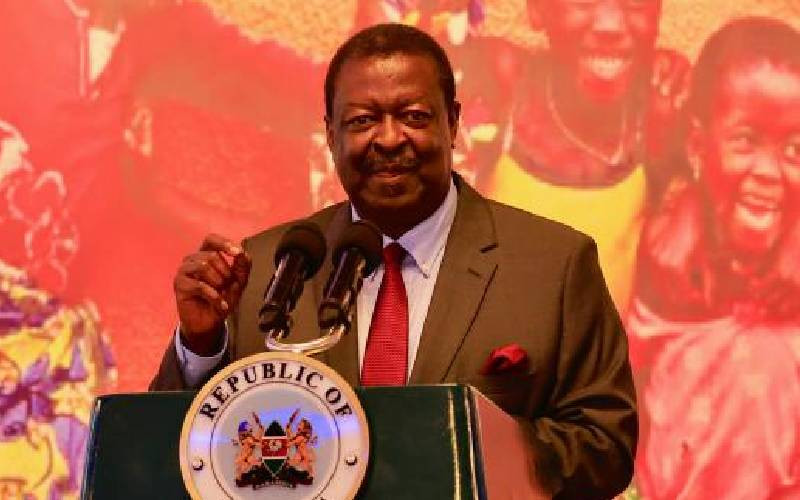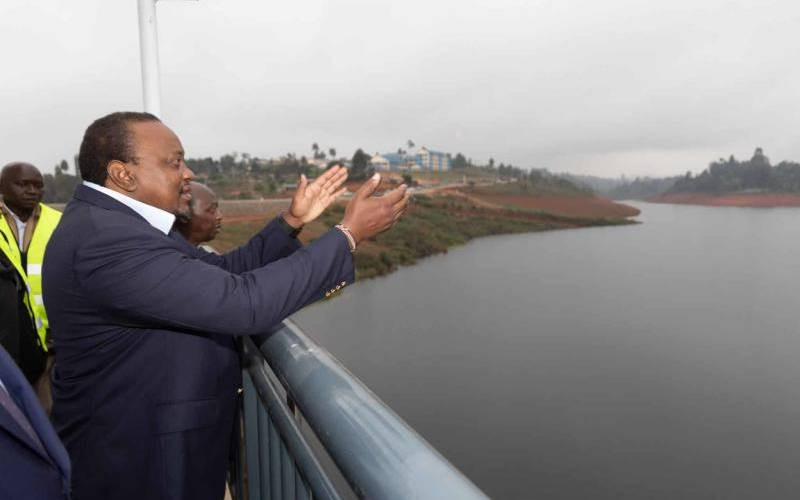As is now the tradition since the promulgation of the new Constitution, President Uhuru Kenyatta will deliver the State of the Nation address to Parliament today.
Through it, he will outline his administration’s programmes and list the achievements so far. This time last year, Kenyans were still digesting the consequences of President Kenyatta’s choice to work with his bitter challenger at the 2017 election. It is expected that today, he will seek to bask in the glory of the handshake, if any.
Those in his political grouping seemingly caught off guard at the time grudgingly embraced the initiative. Fast forward to 2019: Approval has changed to condemnation and unceasing name-calling. Yet nothing defines Mr Kenyatta’s legacy than the handshake with his fiercest competitor at the last elections; Raila Odinga. Nobody other than the two know about the details of what led to the signing of the Building Bridges Initiative.
Essentially, the handshake was meant to address ethnic antagonism by ensuring inclusivity; strengthening devolution, ending divisive elections, ensuring security and safety of all Kenyans, curing corruption and hence a shared prosperity for all Kenyans. But then the handshake was fraught with many risks.
We had cautioned Mr Kenyatta and Mr Odinga that they needed to disabuse the country that with the politics of 2022 coming into focus, self-preservation was not the main motive. On that score, the jury is still out.
Nonetheless, some will view the zeal with which the president has fought corruption as testimony that the handshake is working. There are those who feel (rightly) that the more than 20 high profile arrests and prosecution of corruption suspects would not have been possible without the handshake.
Beyond that, Mr Kenyatta must address what causes corruption and more specifically, what makes it easy for corruption to thrive in public service. One of the ways of addressing those issues is by confronting its causes. Each year, according to the World Bank, corruption denies some 250,000 Kenyan youth a job opportunity.
Youth unemployment is a ticking time bomb. Left with nothing worthwhile to do, the youth provide a ready swamp for all manner of shenanigans: crime, political chaos and even terrorism. We don’t suffer much illusion. There can never be enough jobs for everyone. But we know that things can be made better for the 7 million unemployed youth who feel hard done by.
To create more jobs, the government must think outside the box. Government functionaries must act like they appreciate the problem and be at the forefront in devising tangible attempts to fix the problem. They can start by creating a conducive environment that encourages innovation and creativity. In the last 15 months alone, 15 firms listed on the Nairobi Securities Exchange have issued profit warnings.
Companies issue profit warnings when their full year earnings are foreseen to drop by at least 25 per cent. The private sector – though hit hard by high operational costs including taxes, energy and labour- is still deemed the largest and better employer. To stay afloat, these businesses will resort to cost-cutting measures like sending away employees, thus denying the taxman PAYE taxes. That translates to low earnings by KRA. That should worry Mr Kenyatta.
It should worry him that because of the falling revenue collections, his government plans to borrow Sh600 billion from the domestic and international market, pushing debt levels to a record high of Sh6 trillion. Make no mistake, we are not saying debt is bad. Not at all. After all, that is money you didn’t have in the first place. What we are calling for is prudence in the usage of the funds.
Mr Kenyatta should acknowledge that the trouble with the borrowing spree is that some or most of these monies have been used to cover recurrent expenditure rather than fund development which guarantees a return. A lot more still was misused or got stolen. That is a double blow to the taxpayer.
He could use the address to spell out how he will ensure prudent spending of these funds.Yet it would be wrong to paint it as all doom and gloom. In absolute terms, the economy is not in much peril; there are massive infrastructural projects going on including roads projects which if complete, will boost the economy; widespread insecurity has largely been contained; devolution is unleashing great promise across the country. But there remain so much unfinished business.
For example, he will need to give the Big 4 agenda the impetus it needs to get it running even as he seeks to cement his legacy. The Affordable Housing Agenda is stuck in the conceptual stage; while food security is mired in allegations of corruption. The construction of Kimwarer and Arror dams earmarked for irrigation projects is uncertain. The Sh6 billion 1 million-acre Galana-Kulalu project is in ruins after the contractor abandoned the project midway.
While the Universal Health Care is in the piloting stage in four counties. For manufacturing, there is little to show for the high-flown ideas and messages.
Stay informed. Subscribe to our newsletter
The place of Kenya in the region will also feature. For far too long, Kenya has punched below its weight. In spite of its status as a social and economic powerhouse, Kenya has stood by as relatively smaller neighbours have taken the lead role in regional assignments. Kenya’s role in stabilizing war-torn Somalia is commendable. President Kenyatta could use the chance to demonstrate the benefits of the 8-year-old campaign popularly known as Operation Linda Nchi especially in muting threats of terrorism on the home land. If nothing else, that should dispel fears that the involvement of KDF in Somalia is open-ended.
Surely, Mr Kenyatta won’t lack what to say. He has shown that he can put the interest of the country before all else. He can do it again.
 The Standard Group Plc is a
multi-media organization with investments in media platforms spanning newspaper
print operations, television, radio broadcasting, digital and online services. The
Standard Group is recognized as a leading multi-media house in Kenya with a key
influence in matters of national and international interest.
The Standard Group Plc is a
multi-media organization with investments in media platforms spanning newspaper
print operations, television, radio broadcasting, digital and online services. The
Standard Group is recognized as a leading multi-media house in Kenya with a key
influence in matters of national and international interest.
 The Standard Group Plc is a
multi-media organization with investments in media platforms spanning newspaper
print operations, television, radio broadcasting, digital and online services. The
Standard Group is recognized as a leading multi-media house in Kenya with a key
influence in matters of national and international interest.
The Standard Group Plc is a
multi-media organization with investments in media platforms spanning newspaper
print operations, television, radio broadcasting, digital and online services. The
Standard Group is recognized as a leading multi-media house in Kenya with a key
influence in matters of national and international interest.








